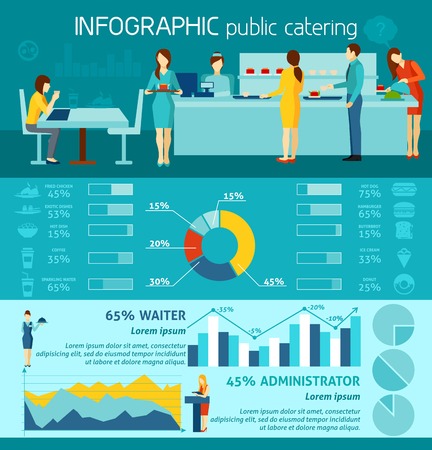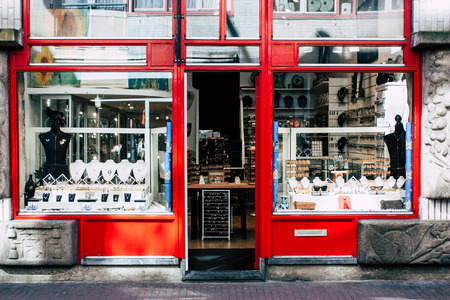1. Understanding the Importance of Google Business Profile for UK Hospitality
For restaurants and cafés across the UK, a well-optimised Google Business Profile is no longer just a nice-to-have—it’s an essential tool for standing out in an increasingly competitive market. With British consumers relying heavily on local search to discover new dining experiences, your establishment’s online presence directly impacts footfall and bookings. According to recent trends, “near me” searches have soared, with diners expecting up-to-date information, photos, reviews, and easy ways to connect before making a decision. A fully optimised profile not only ensures your restaurant or café appears prominently in Google Maps and local search results but also builds trust by meeting customer expectations around transparency and accessibility. In the UK’s hospitality sector, where reputation and first impressions are critical, taking control of your Google Business Profile can significantly influence both visibility and customer loyalty.
Crafting an Authentic, British-Focused Business Description
When optimising your Google Business Profile for a UK-based restaurant or café, your business description is prime real estate. A well-crafted, locally-relevant profile not only attracts more diners but also distinguishes you from competitors. Here’s how to write a concise, authentic description that resonates with British customers and highlights what makes your establishment uniquely British.
Tips for Writing a Compelling British Business Description
| Tip | Description | Example |
|---|---|---|
| Be Concise and Informative | Keep your description under 750 characters. Focus on what you offer and why diners should choose you. | “A family-run café in the heart of York, serving freshly baked scones and classic afternoon teas.” |
| Highlight Local Ingredients or Traditions | Mention if you use British-sourced produce or traditional recipes to emphasise authenticity. | “Our menu features Cornish clotted cream and locally-roasted Hampshire coffee.” |
| Reference Your Heritage or Story | Share the history or inspiration behind your business to create a personal connection. | “Established in 1985, our tearoom preserves Brighton’s Victorian charm.” |
| Use British English and Local Terms | Opt for UK spelling and regional phrases relevant to your location. | Use “cosy” instead of “cozy”, “takeaway” instead of “takeout”. |
| Mention Awards or Community Involvement | If you’ve received local awards or support community events, include these to build trust. | “Proud winner of the 2023 Bristol Foodie Award and active supporter of local food banks.” |
| Add a Unique Selling Point (USP) | What sets you apart? Whether it’s a secret recipe, riverside views, or dog-friendly policy – make it clear. | “Enjoy panoramic views of the Thames from our riverside terrace – dogs welcome!” |
Structuring Your Description Effectively
- Opening Line: State your location, cuisine type, and overall vibe (e.g., “cosy bistro in Edinburgh offering Scottish classics”).
- Main Body: Share what’s unique: signature dishes, local partnerships, historical elements, sustainability initiatives.
- Closing Statement: Add a call-to-action: “Book your table today for a true taste of Britain.”
Remember: Stay True to Your Brand Voice
Your description should reflect your establishment’s character—whether that’s playful and modern, historic and refined, or warm and family-friendly. By weaving in genuine British elements and focusing on what matters most to UK diners, your Google Business Profile will be both discoverable and desirable.

3. Optimising Contact Details and Opening Hours for UK Customers
Ensuring your restaurant or café’s contact information is accurate and up-to-date on your Google Business Profile is critical for both local SEO and customer trust. Begin by double-checking that your business name, address, and phone number (NAP) match those displayed on your website and any other online directories. Consistency across platforms helps Google recognise and rank your listing higher in search results.
Listing Your Address Correctly
For UK-based establishments, always use the official Royal Mail format for addresses. Include the street number, street name, locality (if applicable), town/city, and correct postcode. This not only enhances professionalism but also makes it easier for customers to find you using navigation apps or sat navs. Avoid abbreviations commonly used outside the UK (e.g., “Ave” instead of “Avenue”) to prevent confusion.
Phone Number and Email Considerations
List a local landline number rather than just a mobile, as many British customers prefer calling a fixed line for reservations or enquiries. Always include the area code, even if most callers are local, as this reassures tourists or out-of-town guests. If you offer email support or booking, make sure the address is monitored daily and responds promptly to queries. Use a professional email domain (e.g., [email protected]) rather than a generic one like Gmail or Yahoo to build credibility.
Setting Typical British Opening Hours
Display your regular opening hours clearly, adhering to common UK dining patterns—many cafés open from early morning (around 8am) until late afternoon (5-6pm), while restaurants may have split lunch (12-2:30pm) and dinner service (5-10pm). Update your hours to reflect last orders or kitchen closing times where relevant, as British diners value knowing when they can be seated or order food.
Seasonal & Bank Holiday Updates
Don’t overlook seasonal adjustments and bank holidays, which are particularly significant in the UK. Whether you close early on Christmas Eve, shut entirely on Boxing Day, or extend hours during summer weekends, always update these changes in advance on your Google Business Profile. Utilise the ‘Special Hours’ feature within Google My Business to highlight these exceptions so customers aren’t disappointed by outdated information.
By meticulously managing contact details and opening times, you’ll not only avoid confusion but also foster trust with both new and returning guests—an essential step in building long-term loyalty within the competitive UK hospitality sector.
4. Enhancing Your Listing with High-Quality, Culturally Relevant Photos
Visual appeal plays a crucial role in how potential diners perceive your restaurant or café on Google Business Profile. For UK-based establishments, it’s essential to use professional, high-resolution images that resonate with local expectations and culture. Here’s how you can optimise your listing using culturally relevant imagery:
Showcase Signature British Menu Items
Highlighting classic British dishes not only entices locals but also assures tourists of an authentic experience. Ensure images of items like a Full English Breakfast, Sunday Roast, Fish and Chips, Afternoon Tea, or seasonal pies are well-lit and presented attractively. Use natural lighting where possible and avoid heavy filters to maintain authenticity.
Capture the Ambience
Photograph your dining areas during peak times to reflect the lively atmosphere or during quieter periods for a cosy vibe. Feature elements such as rustic interiors, contemporary décor, or garden seating if available. These images help set expectations for guests and distinguish your establishment from competitors.
Include Local Surroundings and Landmarks
Images of your restaurant’s exterior with recognisable UK landmarks or street views build trust and help customers easily locate you. If you’re near a famous site, park, or historic building, include these in your gallery. This signals your connection to the local community and boosts relevance in local searches.
Recommended Photo Types and Purposes
| Photo Type | Purpose | Example |
|---|---|---|
| Main Dishes | Showcase menu highlights and specialties | Fish & Chips, Shepherd’s Pie |
| Beverages & Desserts | Promote popular drinks and sweet treats | British Ale, Cream Tea |
| Interior Shots | Demonstrate ambience and seating options | Cosy pub corners, Modern café baristas at work |
| Exterior & Location | Aid customer recognition and navigation | Café front with red phone box nearby |
| Events & Specials | Advertise unique offerings or themed nights | Quiz night setup, Christmas dinner spread |
Technical Tips for Uploading Images to Google Business Profile:
- Resolution: Use images with a minimum width of 720 pixels for clarity across devices.
- Naming Files: Include keywords relevant to your business and location (e.g., “sunday-roast-london.jpg”).
- Cultural Sensitivity: Avoid stereotypes; represent genuine UK hospitality through real staff and customers when appropriate.
- Diversity: Regularly update photos to reflect seasonal menus, local events, or interior updates.
- User-Generated Content: Encourage satisfied customers to upload their own photos for added authenticity and engagement.
By curating a gallery of professionally shot, culturally resonant photos, you not only enhance visual appeal but also strengthen your connection with UK audiences searching for their next dining experience. Quality visuals instil confidence and set the right expectations before guests even step through your door.
5. Encouraging and Managing Reviews in the UK Context
In today’s digital landscape, reviews play a critical role in shaping customer decisions, especially for restaurants and cafés. Within the UK, encouraging and managing feedback through your Google Business Profile requires a blend of proactivity and local etiquette.
Best Practices for Eliciting Genuine Local Reviews
Start by making it easy for satisfied customers to leave a review. After a positive dining experience, politely invite patrons to share their thoughts online, either verbally or via a discreet card with your business’s Google review link. British culture values subtlety, so avoid being overly pushy—opt for phrases such as “We’d be grateful if you could share your experience on Google.” Consistency is key; train your team to recognise opportunities to ask regulars and happy guests for feedback without seeming intrusive.
Responding Appropriately Using UK English and Etiquette
When responding to reviews, always use courteous British English, maintaining professionalism regardless of whether the feedback is positive or negative. For positive reviews, thank reviewers personally—mention specifics from their comments if possible—and express genuine appreciation for their custom. For example: “Thank you ever so much for your lovely words about our Sunday roast.”
Handling Negative Feedback Gracefully
If you receive criticism, respond promptly and politely. Acknowledge any shortcomings, apologise sincerely if necessary, and offer to discuss issues offline if appropriate. Avoid defensive language; instead, thank the reviewer for their honesty and indicate any steps you are taking to improve. This approach demonstrates your commitment to customer satisfaction and reflects well on your establishment’s reputation within the UK hospitality scene.
By fostering authentic reviews and engaging with customers using proper UK etiquette, restaurants and cafés can build trust locally while maximising their visibility through a well-managed Google Business Profile.
6. Utilising Google Posts and Updates for UK Events and Specials
To make the most of your Google Business Profile, regular use of Google Posts is essential—especially for restaurants and cafés in the UK aiming to engage local customers.
Highlighting British Events and Traditions
Google Posts are a powerful way to promote quintessentially British events, such as afternoon tea experiences, Sunday roast specials, or seasonal celebrations like Bonfire Night and St George’s Day. By sharing posts about these cultural events, you demonstrate an understanding of local traditions and invite UK customers to enjoy authentic experiences at your venue.
Promoting Seasonal Specials
Leverage Google Posts to showcase seasonal menus—think summer Pimm’s pitchers, autumn pumpkin soup, or festive mince pies. Highlighting limited-time offers or chef’s recommendations not only attracts foodies searching for something new but also capitalises on trending tastes throughout the year.
Supporting Local Initiatives
Engage with your community by posting about partnerships with local producers, charity fundraisers, or participation in neighbourhood festivals. These updates reinforce your commitment to supporting the local area—a value many British consumers appreciate.
Best Practices for Posting on Google Business Profile
- Frequency: Post regularly to keep your profile fresh and relevant—ideally once a week or around key dates.
- Imagery: Use high-quality photos that capture the essence of your event or special—pictures of a classic cream tea or bustling Sunday carvery work well.
- Tone: Adopt a friendly yet professional tone that resonates with UK audiences; avoid overly promotional language in favour of genuine invitations.
By consistently updating your Google Business Profile with posts tailored to British tastes and traditions, you’ll not only boost online visibility but also foster stronger connections with your local customer base.


